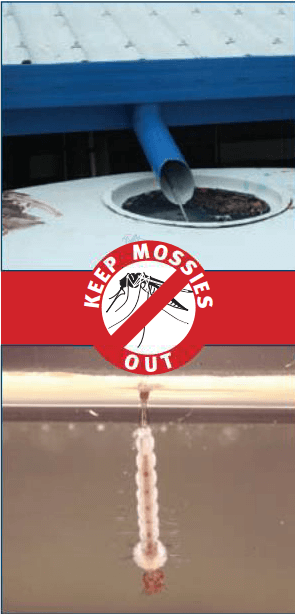Rainwater tanks – A guide to keeping your tank safe from mosquitoes

Rainwater tanks in Queensland have the potential to create health risks. For example, they can become breeding sites for mosquitos if not properly maintained. Below are three important steps to make sure your tank does not become a health risk for you, your family and your community.
- New tanks
In Queensland, all new tanks must be fitted with mosquito-proof screens and/or flap valves on every opening, including overflows. The screens must be made of brass, copper, aluminium or stainless steel gauze, have a mesh size of 1mm or less, installed in a way that does not cause or accelerate corrosion, and stops mosquitoes passing through the openings. Flap valves must be able to stop mosquitoes passing through the openings when they are closed.
- Maintaining your tank
Maintaining your rainwater tank is an important responsibility. Maintenance is needed to maintain good water quality and prevent mosquitoes breeding.
- Disposing of your tank
Rainwater tanks may become a major mosquito breeding site when they are no longer required or when they fall into disrepair. Disused tanks may also harbour rats and mice. Tanks that are no longer required should be drained, cut up and removed to an approved waste disposal site. Contact council for your nearest location.
See the Queensland Health brochure ‘Rainwater tanks – A guide to keeping your tank safe from mosquitoes for further information
For further information on mosquito protection see Council’s website, phone Council’s Environmental Health staff on 1300 696 272 (1300 MY NBRC) or email Council.
Source: Queensland Government
